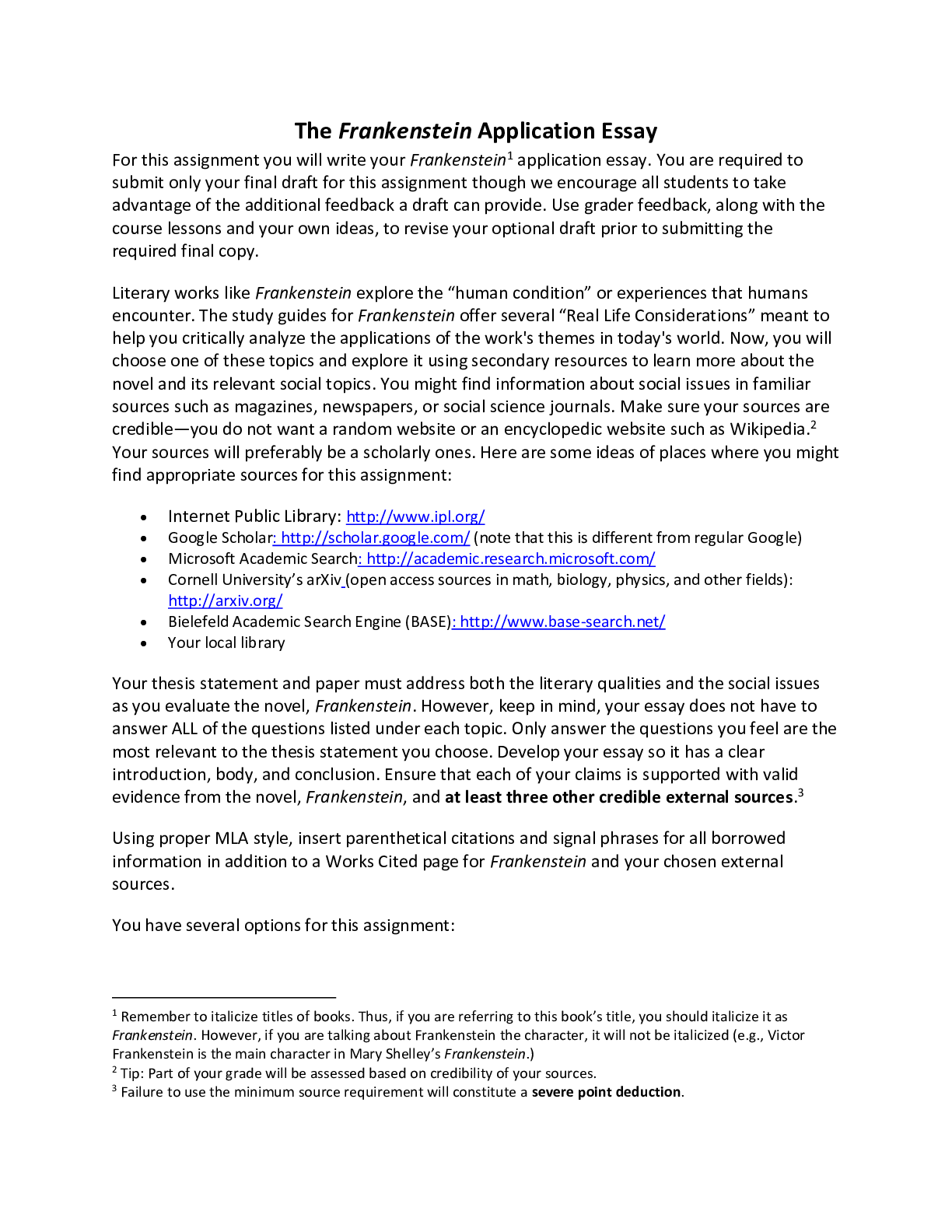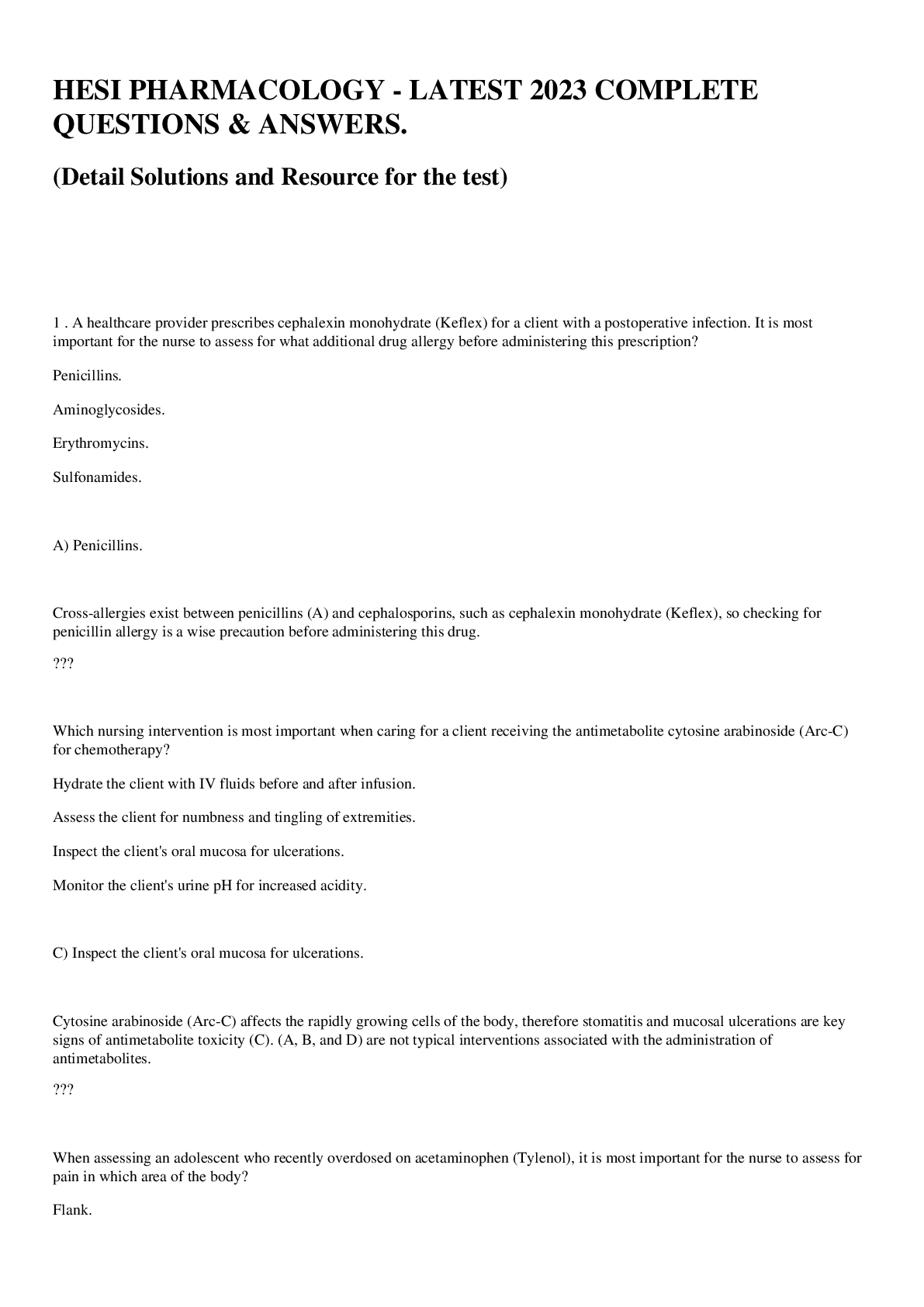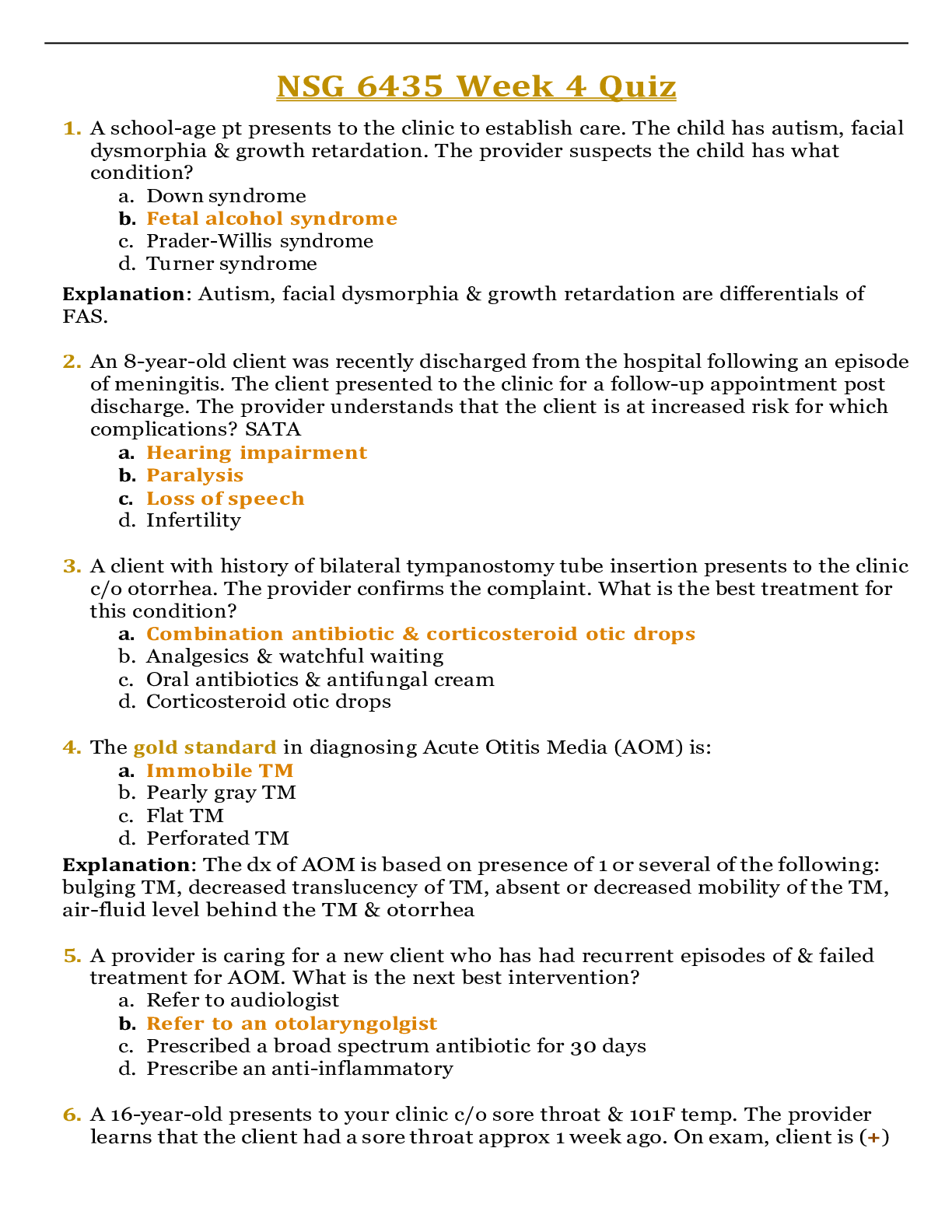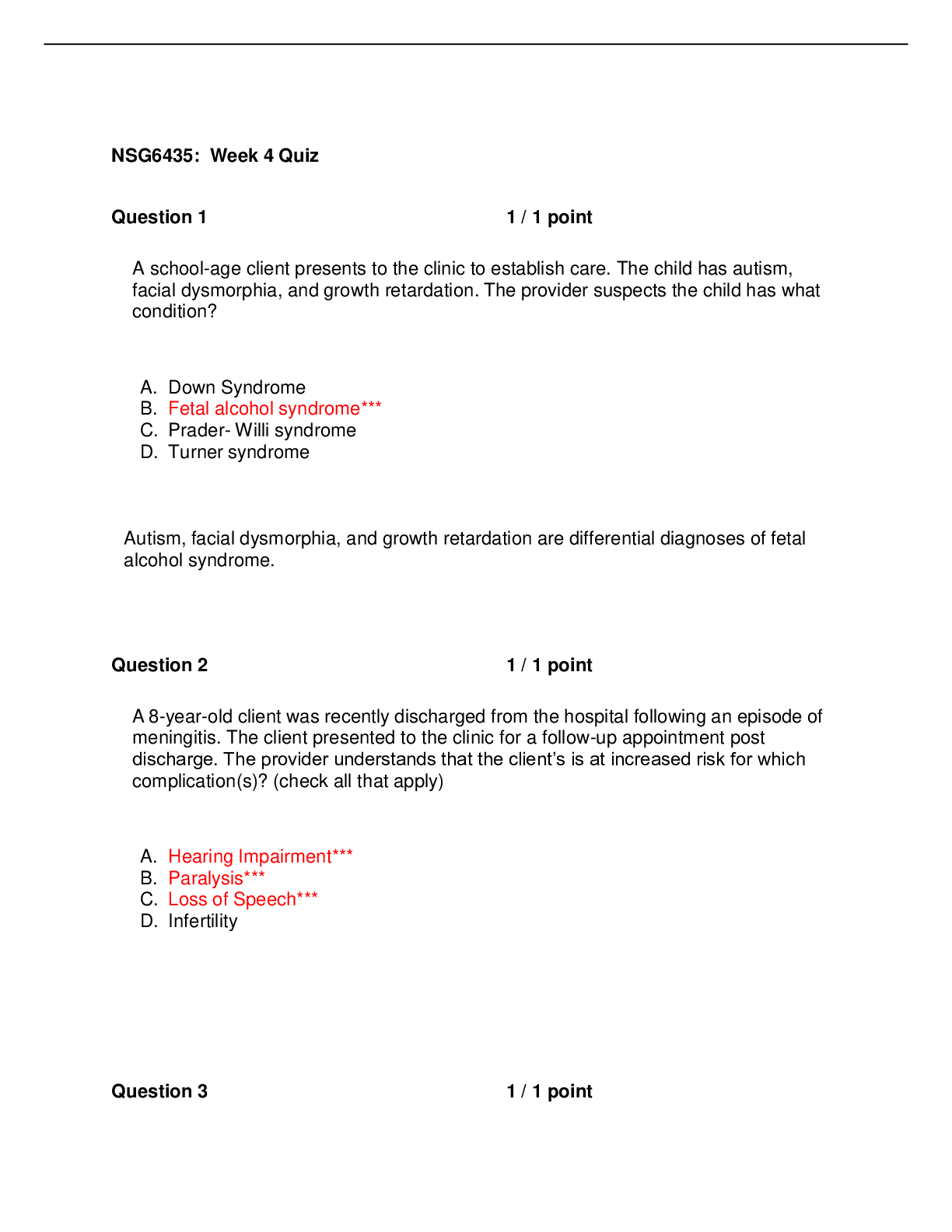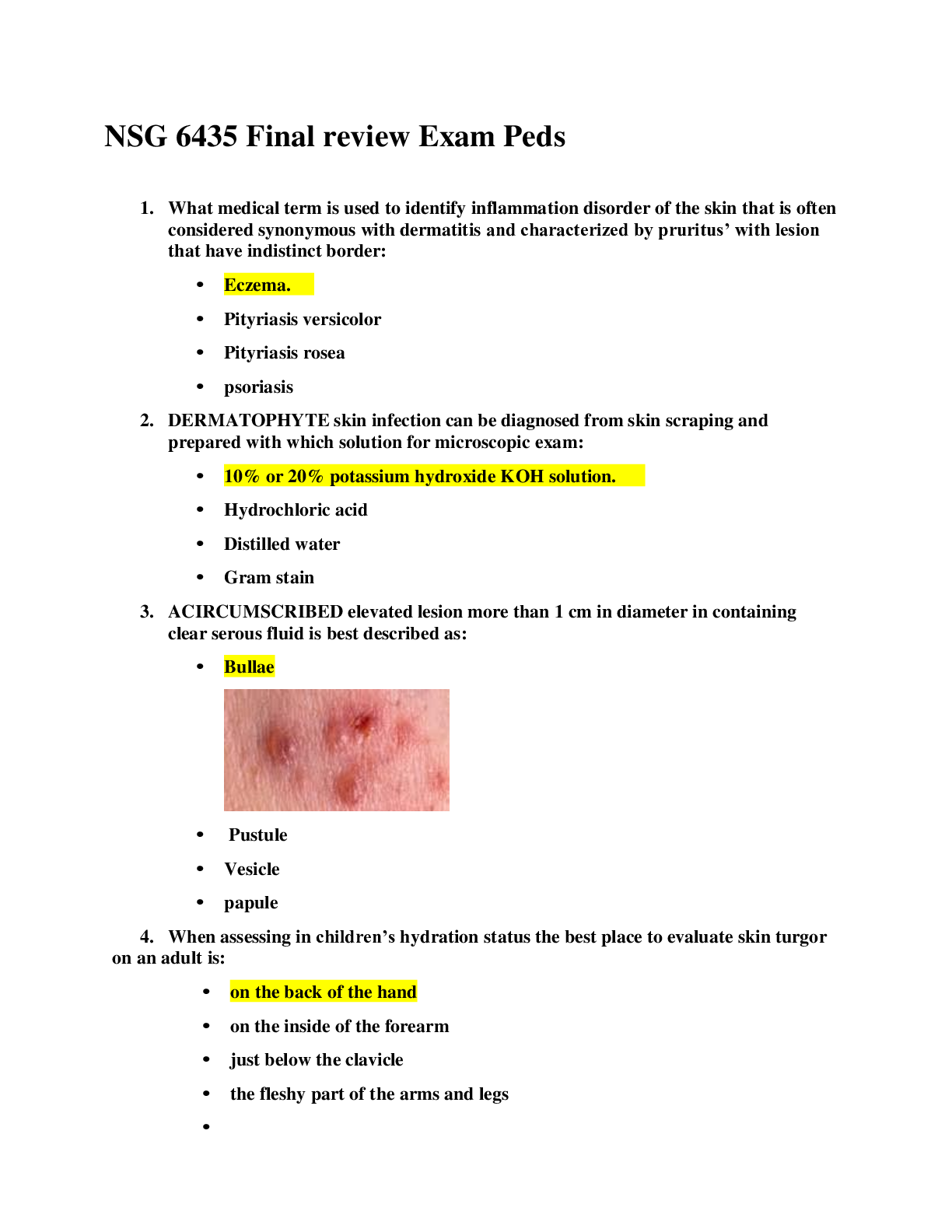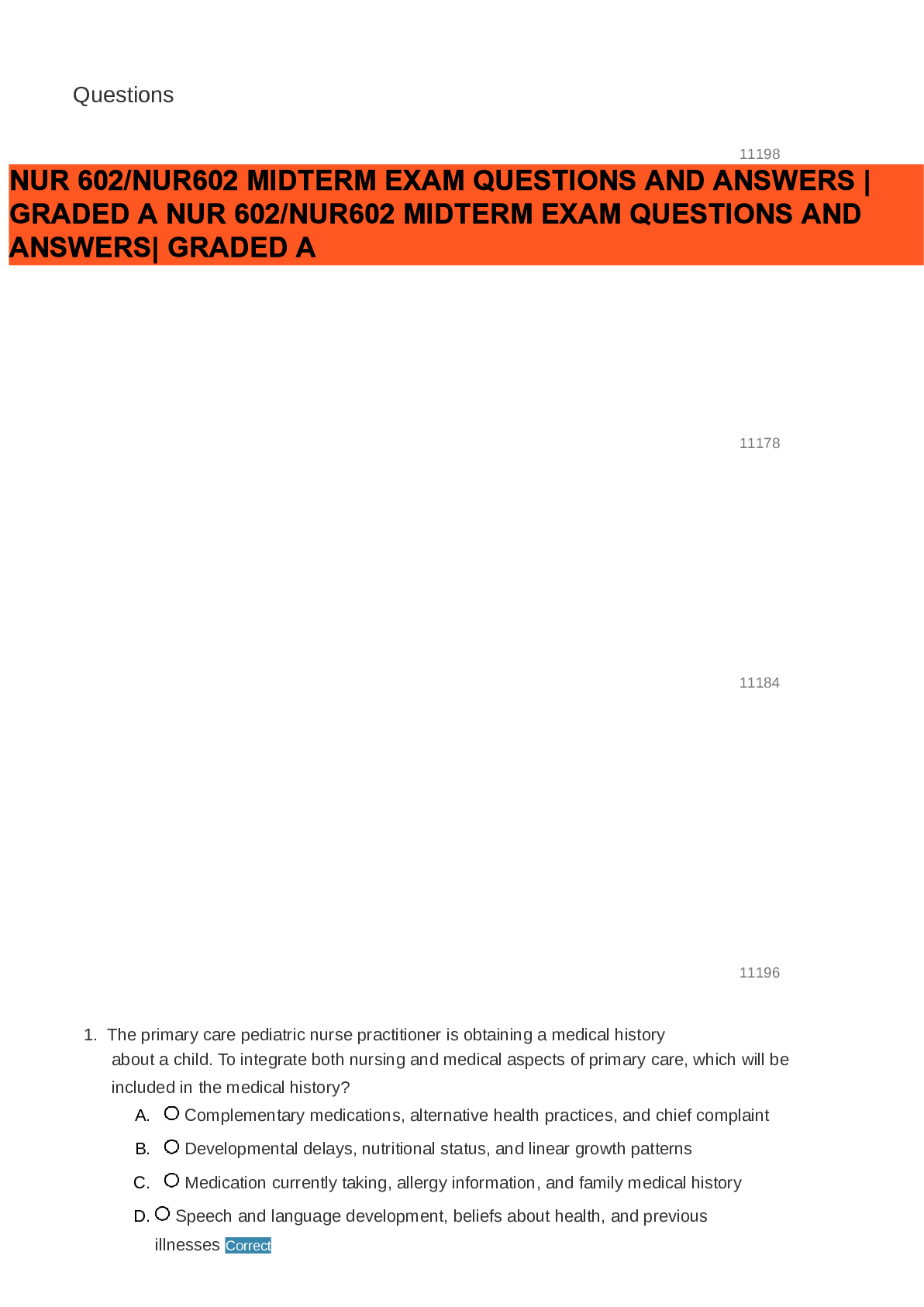Economics > QUESTIONS & ANSWERS > Microeconomics Practice Questions (2nd Midterm Exam) Microeconomics (All)
Microeconomics Practice Questions (2nd Midterm Exam) Microeconomics
Document Content and Description Below
1.Constantine purchased 100 shares of IBM stock several years ago for $150 per share. The price of these shares has fallen to $55 per share. Constantine's investment strategy is "buy low, sell high."... Therefore, he will not sell his IBM stock until the price rises above $150 per share. If he sells at a price lower than $150 per share he will have "bought high and sold low." Constantine's decision: a. is correct and shows a solid command of the nature of opportunity cost. b. is incorrect because the original price paid for the shares is a sunk cost and should have no bearing on whether the shares should be held or sold. c. is incorrect because when the price of a stock falls, the law of demand states that he should buy more shares. d. is incorrect because it treats the price of the shares as an explicit cost. 2.Which of the following statements correctly uses the concept of opportunity cost in decision making? I. "Because my secretary's time has already been paid for, my cost of taking on an additional project is lower than it otherwise would be." II. "Since NASA is running under budget this year, the cost of another space shuttle launch is lower than it otherwise would be." a. I is true, and II is false. b. I is false, and II is true. c. I and II are both true. d. I and II are both false. Scenario 1: The average total cost to produce 100 cookies is $0.25 per cookie. The marginal cost is constant at $0.10 for all cookies produced. 3.Refer to Scenario 1. The total cost to produce 50 cookies is a. $20 b. $25 c. $50 d. $60 e. indeterminate 4.Refer to Scenario 1. For 100 cookies, the average total cost is a. falling. b. rising. c. neither rising nor falling. d. less than average fixed cost. 5. Refer to Scenario 1. Which piece of information would NOT be helpful in calculating the marginal cost of the 75th unit of output? a. The total cost of 75 units. b. The total cost of 74 units. c. The variable cost of 75 units. d. The variable cost of 74 units. e. The firm's fixed cost 6.A firm's expansion path is a. the firm's production function. b. a curve that makes the marginal product of the last unit of each input equal for each output. c. a curve that shows the least cost combination of inputs needed to produce each level of output for given input prices. d. none of the above. a Microeconomics Practice Questions (2nd Midterm Exam) 7.Consider the following statements when answering this question I. If the marginal product of labor falls whenever more labor is used, and labor is the only factor of production used by the firm, then at every output level the firm's short run average variable cost exceeds marginal cost. II. If labor obeys the law of diminishing returns, and is the only factor of production used by the firm, then at every output level short-run average variable costs exceed marginal costs. a. I is true, and II is false. b. I is false, and II is true. c. I and II are both true. d. I and II are both false. [Show More]
Last updated: 2 years ago
Preview 1 out of 17 pages
.png)
Buy this document to get the full access instantly
Instant Download Access after purchase
Buy NowInstant download
We Accept:

Reviews( 0 )
$12.50
Can't find what you want? Try our AI powered Search
Document information
Connected school, study & course
About the document
Uploaded On
Jun 09, 2021
Number of pages
17
Written in
Additional information
This document has been written for:
Uploaded
Jun 09, 2021
Downloads
0
Views
110




